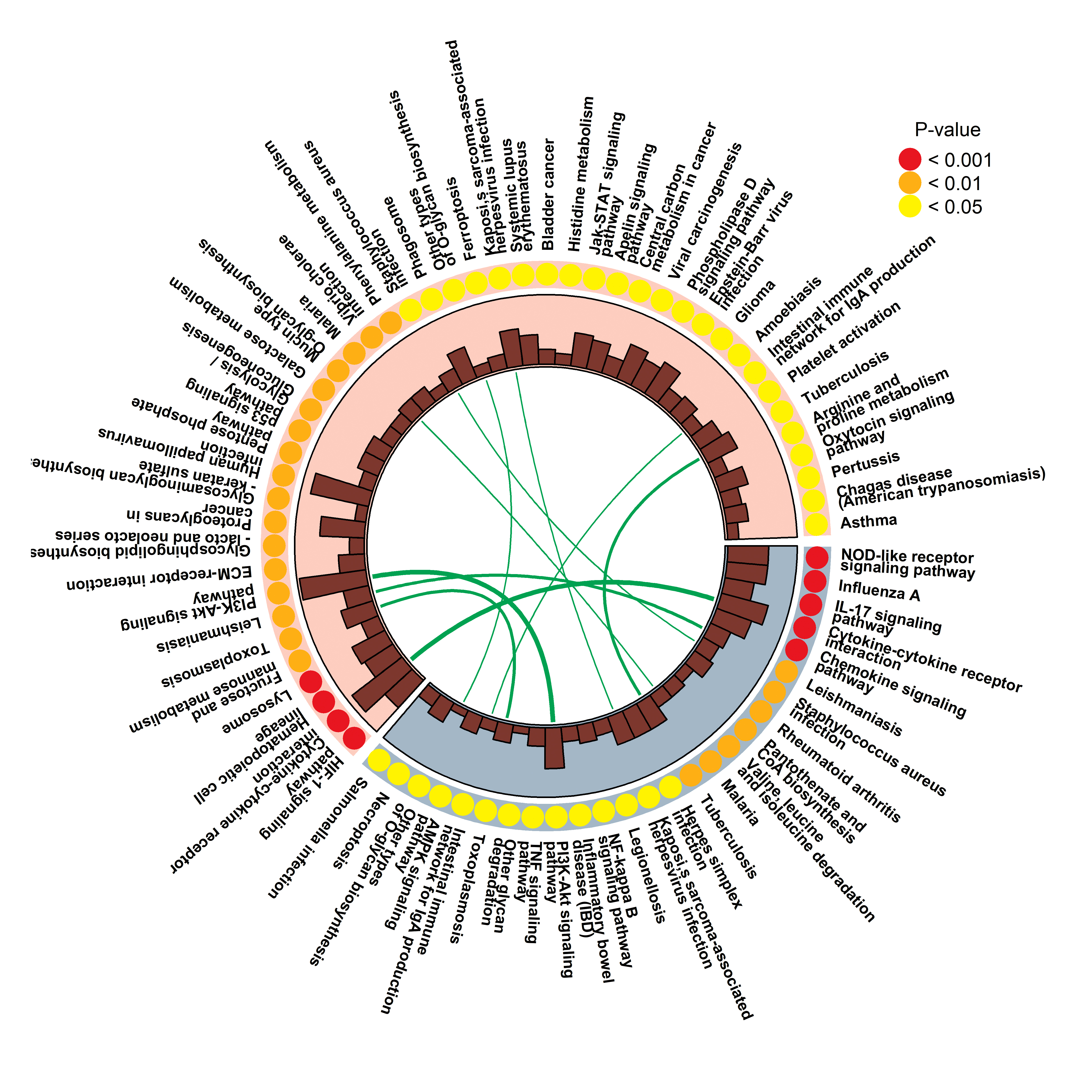Visualizing the Genomics of Sex-Related Differences in Asthma
Research By: Tesfaye Mersha, PhD
Post Date: August 26, 2019 | Publish Date: Aug. 1, 2019

“Perhaps the greatest finding from sex- and tissue-specific analysis of gene expression is not the differential expression of individual genes but the identification of sex-specific pathways where these genes act.”
—Tesfaye Mersha, PhD
When it comes to the ’omics of asthma, a far-reaching study led by Cincinnati Children’s scientist Tesfaye Mersha, PhD, demonstrates that males and females are not created equal.
The findings, published Aug. 1, 2019, in Human Molecular Genetics, were significant enough that the journal editors chose a key “circle plot” from the study to serve as the issue’s cover art.
The study examined 12 public data sets to evaluate the differences in gene expression profiles between 711 asthmatic males and 689 females. The team pored through more than 2.8 million transcripts covering 20,000 genes from five tissue and cell types: epithelial, blood, induced sputum, T cells and lymphoblastoids.
They identified 439 male-specific and 297 female-specific differentially expressed genes (DEGs) in all cell types, with 32 genes in common. With further analysis, they identified four male-specific genes and one female-specific gene that are dysregulated during asthma.

Mersha says the study made four important findings:
- The team identified distinct landscapes of sex-related differential gene expression in male and female asthmatics. Differences occur in both magnitude and direction of gene expression, with several genes involved in cell migration, airway remodeling and mucus production. “The identification of sex-specific genes and pathways, which predispose individuals to asthma, will facilitate the targeting of novel therapeutics and treatment strategies in development.”
- Airway epithelial tissues harbored the majority of sex-specific biological pathways enriched with DEGs, which suggests that epithelial tissues can be used as a model system for asthma.
- The team mapped four male-specific genes (FBXL7, ITPR3 and RAD51B from epithelial tissue and ALOX15 from blood) and one female-specific gene (HLA-DQA1 from epithelial tissue).
- And beyond focusing on individual genes, the team focused on biological pathways influenced by sex-specific variants. For example, the HIF-1 signaling pathway, a master regulator of oxygen homeostasis, is significantly enriched in male-specific DEGs. Several studies have linked HIF-1 to allergic airway inflammation and asthma. Meanwhile, the IL-17 signaling pathway is enriched in asthmatic females, which could partly explain the prevalence of severe asthma in post-pubertal females.
“Our results highlight the importance of sex-stratified analysis in tissue-specific manner when analyzing gene expression data,” Mersha says. “More research is needed to validate and ultimately develop sex-specific treatments for asthma. But this study identifies biologically relevant overlapping asthma genes, which should be given high priority for follow up analysis.”
| Original title: | Genome-wide analysis revealed sex-specific gene expression in asthmatics |
| Published in: | Human Molecular Genetics |
| Publish date: | Aug. 1, 2019 |
Research By








